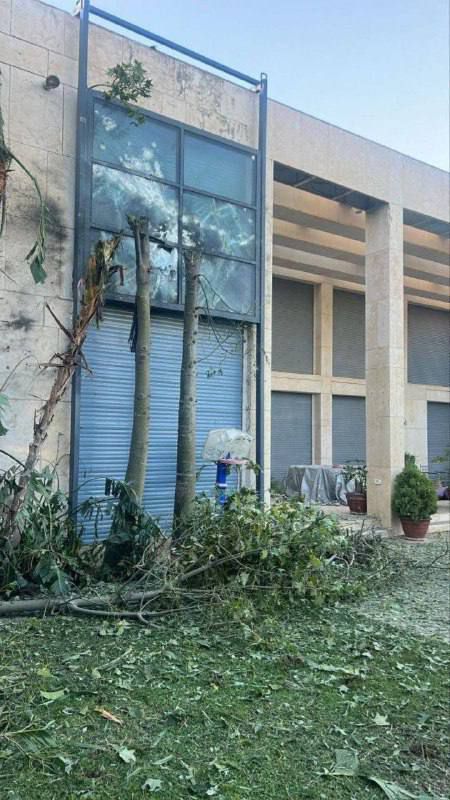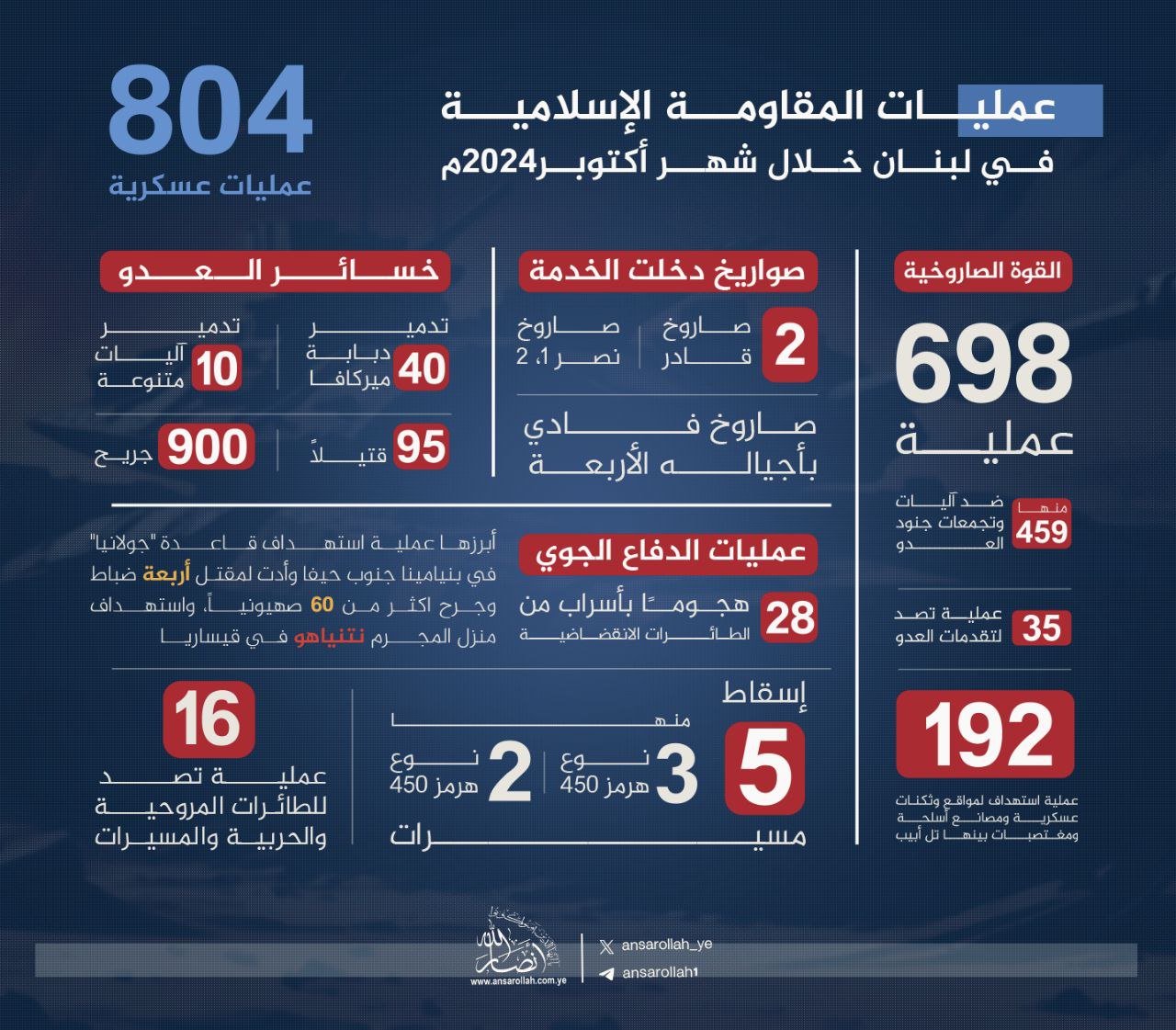Hezbollah’s October Operations: Restoring Strength to a Force for Liberation
The resistance continues to strengthen its capabilities and expand its operations, with military maneuvers now posing a genuine threat to the security of the Zionist enemy. As pressures intensify on the occupying forces, resistance leaders caution that the coming days will bring unanticipated developments that could dramatically alter the region’s power dynamics.
Recent field reports reveal that these operations have gone beyond missile strikes, incorporating complex intelligence efforts and precise targeting of command and control centers. These strategic maneuvers have immobilized the enemy’s movements and disrupted their military plans. An increase in alertness has been observed among occupation forces, with growing calls for better air defenses and a comprehensive review of confrontation strategies.
The morale within the resistance is high, as demonstrated by the sacrifices of its fighters and their steadfast readiness for battle. This unwavering commitment underscores their deep-rooted dedication to the cause. Recent operations have shown that the resistance embodies more than just military might—it has become a powerful symbol of hope and resilience in the face of tyranny and occupation.
This report highlights Hezbollah’s Islamic Resistance operations in Lebanon throughout October, with blow after blow striking the Zionist enemy. These relentless attacks rekindle the spirit of resistance and draw strength from the determination witnessed in the July 2006 conflict, subjecting the Zionist entity once more to the tenacity and relentless force of the Lebanese Islamic Resistance fighters through a series of surprise operations targeting enemy officers, soldiers, vehicles, and armor.
Throughout October, the Lebanese resistance significantly escalated its military operations. Zionist circles labeled October the “month of losses,” as Hezbollah intensified its rocket fire, missile strikes, and drone attacks. This led to over 804 operations throughout the month alone.
The missile force assumed the majority of the damages, carrying out 698 operations, including 459 targeting Zionist forces concentrated in bases and positions across Zionist-held territories. Additionally, 35 operations repelled enemy advances, foiling infiltration attempts near villages and along battlefronts, forcing the enemy to retreat.
An additional 192 operations targeted military outposts, weapons depots, and settlements as far as occupied Haifa and Yaffa.
The strikes had substantial results, leading to the destruction of over 40 Merkava tanks and several military vehicles, including troop carriers, bulldozers, and armored personnel carriers. For the first time, Hezbollah unveiled components of its missile stockpile from new generations, including the Qader-2, Fadi (in four variations), and Nasr 1 and 2 missiles, signaling the strength and abundance of Hezbollah’s firepower.
Hezbollah’s air defense unit also recorded notable success, shooting down five drones—three of the Hermes 450 model and two of the Hermes 900 model—and executing 16 operations to counter helicopters, fighter jets, and drones. Additionally, 28 drones launched attacks on sensitive sites deep within enemy territory, notably including the October 13 operation targeting the “Golan” base in Binyamina, south of Haifa, eliminating four officers and wounding over sixty Zionist soldiers.
On October 19, another drone operation breached Haifa’s defenses and advanced towards the residence of criminal Netanyahu in Caesarea, reportedly reaching his bedroom window despite being pursued by military helicopters for an hour over Haifa’s skies.

With the intensification of resistance operations, the entity’s army has suffered significant losses across various battlefronts, from the forward lines to deep within the occupied entity. Since the start of what the Israeli entity termed the “ground maneuver,” enemy forces have suffered over 95 fatalities and more than 900 injuries, according to Hezbollah’s War Media Observatory. Hezbollah officials emphasized that this represents only an initial installment in a prolonged campaign.
As the conflict enters a new phase, analysts anticipate that operations will escalate further in the coming weeks, with the resistance expected to receive growing support from regional allies. This shift could reshape the parameters of the struggle, presenting a major challenge to the Zionist entity, which must brace itself for the consequences of its actions. The resistance axis remains in a state of heightened readiness to counter any escalation.

As the intensity of clashes increases and the battle persists, a broader regional conflict appears increasingly possible—a confrontation from which normalization advocates are unlikely to escape unscathed. The resistance axis aims for a decisive victory that could shift regional power balances, laying the groundwork for a region free from American and Western hegemony. The Palestinian and Lebanese people stand at the forefront of this fight, drawing strength from their long-standing history of resistance, jihad, and continuous struggle. As a deeply ingrained ideology and unwavering commitment, resistance is not merely a reaction but a strategic choice that embodies the people’s resolve and firm belief in reclaiming their stolen rights.


